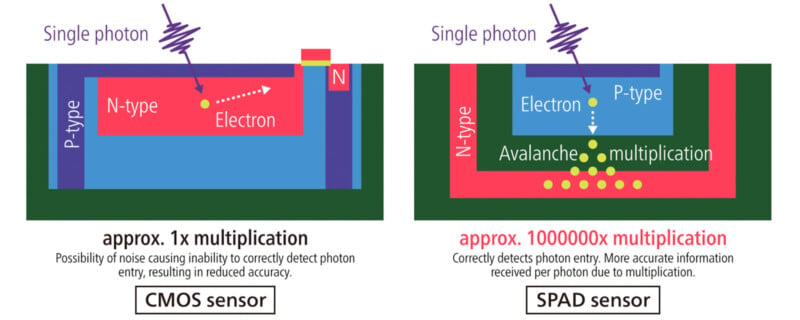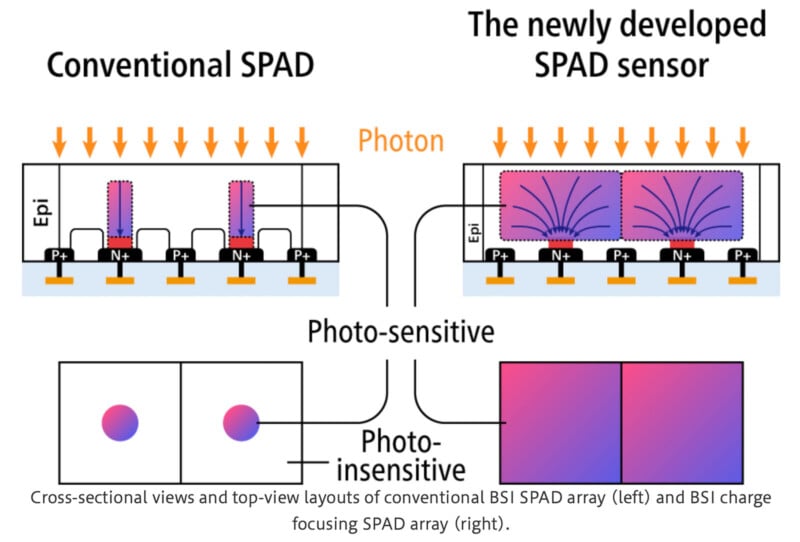Canon’s New Camera Enables Long-Range Night Vision Capabilities
![]()
Canon Inc. has announced the development of the MS-500, the world’s first ultra-high-sensitivity interchangeable-lens camera (ILC) featuring a Type 1 Single Photon Avalanche Diode (SPAD) image sensor. The 3.2-megapixel SPAD sensor promises impeccable low-light performance, and uniquely, the MS-500 works with telephoto broadcast lenses, enabling long-distance monitoring.
The 3.2-megapixel sensor at the heart of the MS-500 was first announced in 2021. At that time, Canon outlined the unique performance of the 13.2mm x 9.9mm SPAD sensor, and explained use cases for high-speed monitoring, medical imaging, sensors for autonomous vehicles, and more.
Canon also explained that “thanks to temporal resolution and high sensitivity, there are expectations that this technology may be used in the process of obtaining high-speed, high-precision 3D special information for such applications as distance measurement for automated vehicles, Augmented Reality (AR), Virtual Reality (VR) and Mixed Reality (MR).”
Unlike traditional CMOS image sensors, like those found in Canon’s DSLR and mirrorless ILC models, a SPAD sensor measures each light particle (photon) reaching every pixel on the image sensor. In contrast, CMOS image sensors measure the amount of light that reaches a pixel within a given time.

“CMOS sensors read light as electric signals by measuring the volume of light that accumulates in a pixel within a certain time frame, which makes it possible for noise to enter the pixel along with the light particles (photons), hence contaminating the information received,” Canon explains.

“Meanwhile, SPAD sensors digitally count individual photon particles, making it hard for electronic noise to enter. This makes it possible to obtain a clear image,” Canon says. Each photon that enters a pixel on a SPAD sensor is immediately converted into an electric charge. The resulting electrons eventually multiply, like an avalanche, until they form an immense enough signal charge to be extracted.

“With CMOS sensors, which are commonly used in conventional modern digital cameras, each pixel measures the amount of light that reaches the pixel within a given time,” Canon says. “However, the readout of the accumulated electronic charge contains electronic noise, which diminishes image quality, due to the process by which accumulated light is measured. This leads to degradation of the resulting image, particularly when used in low-light environments.”
On the other hand, SPAD sensors utilize “photon counting,” which enables the sensor to count each photon that enters each pixel. When even one photon enters a pixel, it’s instantly amplified approximately a million times and output as an electrical signal. Each photon can be digitally counted, enabling “zero-noise during signal readout,” which is a unique advantage of SPAD sensors.

The Canon MS-500 promises clear, full-color HD imaging “even in extremely low-light environments.” When used alongside Canon’s telephoto broadcast lenses, the company claims that the MS-500 can accurately capture distant objects with extreme precision even in very low light — including nighttime scenes with no ambient starlight. Canon proposes nighttime monitoring of seaports as a possible use case for its MS-500 camera.
The Canon MS-500 will go on sale sometime this year and will be displayed at Canon’s booth during the 2023 NAB Show in Las Vegas later this month.
Image credits: Canon